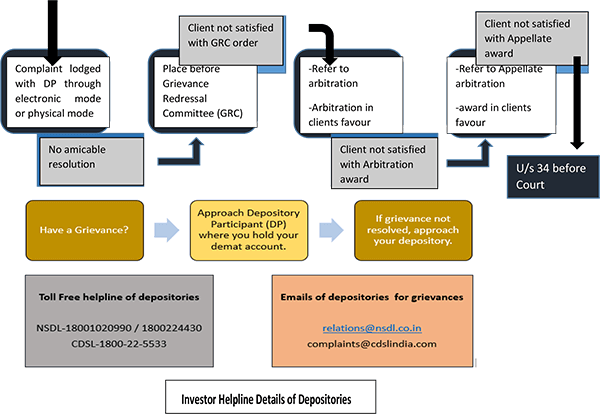Introduction
Ready to dive into the world of investing but not sure where to begin? One of the best stock market indices in India, the Nifty 50, is a great place to start. For both new and experienced investors, purchasing the Nifty 50, which is well-known for its performance and stability, might be a wise choice.
However, what is the real process for investing in this index? You’re in luck, though! You will be guided through the entire process, from defining the Nifty 50 to making your first investment, with the help of this comprehensive guide. So, grab a cup of coffee, get comfy, and let’s get started on your investment journey.
The Nifty 50: What Is It?
Let’s first define the Nifty 50 before getting into the details of how to invest in it. The National Stock Exchange (NSE) of India’s 50 largest and most liquid stocks are included in the Nifty 50 stock market index. These businesses offer diverse exposure to the Indian equities market because they operate in several industries.
Why Invest in the Nifty 50?
Investing in the Nifty 50 offers numerous advantages, making it an attractive option for both novice and seasoned investors. Let’s delve deeper into the key reasons why you should consider investing in this prestigious index.
- Diversification :
Diversification is a cornerstone of sound investing. The Nifty 50 is composed of 50 large-cap companies from various sectors. By investing in the Nifty 50, you gain exposure to a wide range of industries. This diversified approach spreads risk across different sectors, reducing the impact of poor performance in any single industry. - Stability :
The Nifty 50 includes some of India’s most well-established and financially robust companies. These are businesses with a proven track record of stability and growth, even in turbulent market conditions. This stability makes the Nifty 50 a reliable investment option. - Growth Potential :
India’s economy is one of the fastest-growing in the world, and the Nifty 50 is a reflection of this dynamism. The companies in the Nifty 50 are not just large and stable; they are also leaders in their respective fields, driving innovation and expansion. - Liquidity :
Liquidity refers to how easily you can buy or sell an investment without affecting its price. The stocks that make up the Nifty 50 are among the most actively traded on the National Stock Exchange (NSE). This high trading volume ensures that you can quickly buy or sell shares at market prices, providing flexibility and ease of access.
A Step-by-Step Guide
Step 1: Understand Your Investment Objectives
Knowing your financial objectives is a must before you start investing. Are you trying to increase your wealth or are you preparing for retirement or a down payment on a home? Your time range and investing plan will be determined by your goals.
Step 2: Get a Basic Understanding of the Stock Market
It’s important to understand the fundamentals of the stock market if you’re new to trading. Here’s a brief overview:
Stocks: A company’s ownership shares.
Index: A benchmark for a collection of stocks.
Mutual funds: A collection of investors’ combined money used to purchase various stocks.
Exchange-Traded Funds (ETFs): Traded on stock exchanges like individual equities, yet similar to mutual funds.
Step 3: Choose Your Investment Vehicle
You have several choices when it comes to investing in the Nifty 50.
- Investing directly in stocks :
Shares of each of the individual firms that comprise the Nifty 50 can be purchased. Active management and in-depth research are necessary for this strategy. - Mutual Funds :
Purchasing a mutual fund that mimics the Nifty 50 index is known as investing in Nifty 50 mutual funds. It’s a detached method, perfect for people who want expert oversight. - ETFs, or exchange-traded funds :
ETFs are a well-liked means of making Nifty 50 investments. They provide the diversity of mutual funds with stock-like trading. They are available for purchase and sale during the trading day.
Step 4: Create a Trading and Demat Account
You must open both a trading account and a Demat (Dematerialized) account to invest in the Nifty 50. Your shares are kept in electronic form in the Demat account, and shares are bought and sold through the trading account.
Step 5: Do your homework and choose the best stocks or funds
Do your homework before investing in mutual funds, exchange-traded funds (ETFs), or individual equities. Examine the performance of the fund, the expense ratio, and the fund manager’s history. Examine the management, development potential, and financial stability of the organization when evaluating stocks.
Step 6: Make Your Investment
Once you’ve done your research and selected your investment vehicle, it’s time to invest. Make your choice and start investing.
Step 7: Keep an Eye on Your Investments
Investing is not a one-and-done kind of game. Make sure your investments are meeting your objectives by keeping a close eye on them. Pay attention to news, economic data, and market developments that could have an impact on the Nifty 50.
Step 8: Adjust Your Portfolio Balance
Due to market movements, your portfolio may eventually diverge from the original asset allocation. Rebalancing is modifying your assets to preserve the asset mix you have chosen. This can entail purchasing certain investments and selling others.
Conclusion
Investing in the Nifty 50 is a smart way to gain exposure to India’s top companies and diversify your portfolio. By understanding your goals, learning the basics, choosing the right investment vehicle, and staying informed, you can navigate the investing landscape with confidence.
Don’t forget to open a Demat and trading account, do thorough research, and regularly monitor your investments. With patience and a strategic approach, investing in the Nifty 50 can be a rewarding journey.
For expert guidance and personalized investment strategies, consider approaching Mygainn Fintech. Their experienced team can help you make informed decisions, ensuring that your investments are aligned with your financial goals. So, what are you waiting for? Dive in and start building your financial future today!




